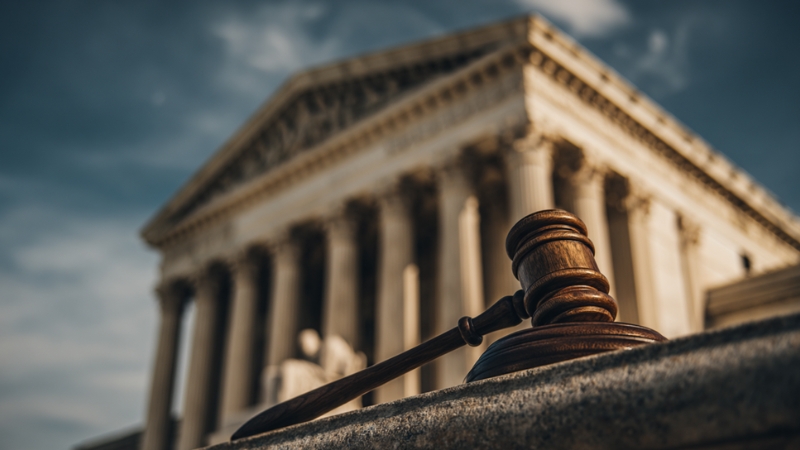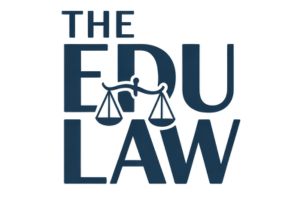The clash between Amazon and New York State in 2025 over workplace regulation is more than a dispute between one corporation and a state legislature.
It represents a fundamental test of the balance of power between federal authority and state sovereignty in labor law.
At its heart, the case asks a critical constitutional question: how far can states go in setting labor protections when federal law already covers much of the field?
The U.S. Constitution provides Congress with the power to regulate commerce and establish uniform labor standards across the nation. Yet states retain broad “police powers” to protect the health, safety, and welfare of their citizens.
The Amazon case forces courts to grapple with where these powers meet, overlap, and sometimes collide.
For Amazon, the world’s second-largest private employer with more than 1.5 million U.S. workers, the outcome dictates not just compliance in New York but the future of its labor model across the country.
For workers, it determines whether states can act as laboratories of innovation, creating protections beyond what federal statutes provide.
Background: Why New York Targeted Amazon
View this post on Instagram
Amazon’s warehouses are a cornerstone of the company’s logistics empire, processing millions of packages each day. But they have also drawn scrutiny for:
- Algorithmic monitoring of workers, tracking every movement and pause.
- High injury rates – a 2023 report by the Strategic Organizing Center found Amazon warehouse injury rates were nearly double the industry average, at 6.9 serious injuries per 100 workers annually.
- Productivity quotas that critics argue make it impossible for employees to take adequate rest or meal breaks.
- Anti-union campaigns, particularly after high-profile organizing drives in Staten Island, New York, and Bessemer, Alabama.
In response, New York lawmakers passed a Warehouse Worker Protection Act (WWPA) in 2024, modeled after California’s AB 701. Key provisions included:
- Quota Transparency: Employers must disclose productivity quotas to workers and state regulators.
- Safety Protections: Quotas cannot be enforced in ways that prevent meal or rest breaks or create unsafe conditions.
- Anti-Retaliation Measures: Employers cannot retaliate against workers who complain about unsafe quotas or attempt to unionize.
Amazon challenged these laws, claiming they were preempted by federal labor law, especially the NLRA, and placed undue burdens on interstate commerce in violation of the Constitution’s Commerce Clause.
Federal Authority in Labor Law
Federal labor regulation rests on three major pillars:
| Federal Statute | Year Enacted | Scope | Key Provisions |
| National Labor Relations Act (NLRA) | 1935 | Union and collective bargaining rights | Protects the right to unionize, bars unfair labor practices |
| Fair Labor Standards Act (FLSA) | 1938 | Wages and hours | Establishes federal minimum wage ($7.25/hr since 2009), overtime pay, and child labor rules |
| Occupational Safety and Health Act (OSHA) | 1970 | Workplace health and safety | Creates OSHA to enforce national safety standards |
These laws give the federal government broad oversight. Under the doctrine of federal preemption, states cannot legislate in areas that federal law already governs comprehensively, particularly in union and collective bargaining relations.
State Authority in Labor Regulation
Workers in New York City, Long Island and Westchester County will soon be making at least $16 an hour, a dollar more than they do now, as the state joins 21 others in lifting the minimum wage https://t.co/x79trWeTtE
— Bloomberg (@business) December 5, 2023
Despite federal dominance, states retain significant room to regulate labor. The U.S. Supreme Court has long recognized that states may legislate for worker health, safety, and welfare, unless in direct conflict with federal law.
Examples include:
- Minimum Wage: As of 2025, New York’s minimum wage is $16/hour statewide, while the federal minimum remains at $7.25.
- Paid Leave: New York requires employers to provide up to 56 hours of paid sick leave annually, with additional family leave benefits.
- Warehouse Quota Laws: New York’s WWPA is one of the first attempts to regulate the impact of algorithmic management systems on workers.
States argue these laws do not interfere with union rights or collective bargaining but rather address day-to-day workplace conditions, making them valid exercises of police power.
The Legal Conflict: Federal Preemption vs. State Innovation
The Amazon case hinged on whether New York’s law was preempted by federal statutes. Courts distinguish between different types of preemption:
| Type of Preemption | Definition | Example in Labor Law |
| Express Preemption | When Congress explicitly bars states from legislating | NLRA prevents state regulation of union elections |
| Field Preemption | When federal law is so comprehensive that it leaves no room for states | Federal ERISA benefits regulation |
| Conflict Preemption | When state law makes it impossible to comply with federal law | A state law requiring fewer overtime hours than FLSA allows |
Amazon argued New York’s law was both field-preempted (because the NLRA governs labor-management relations) and conflict-preempted (because quotas linked to productivity overlap with federal rules on collective bargaining).
New York countered that the law targeted safety and transparency, not bargaining.
Court’s Decision in 2025

The federal appeals court ruling in 2025 produced a split outcome:
- Quota Transparency and Break Protections Upheld: The court found these provisions addressed workplace safety and public health, which fall under state authority. The judges emphasized that ensuring workers can take legally required breaks does not interfere with collective bargaining.
- Union Retaliation Protections Struck Down: The court struck down sections of the law that overlapped with NLRA protections against retaliation for organizing, ruling that the federal government has exclusive authority in that field.
- Commerce Clause Challenge Rejected: Amazon argued that state-specific rules created burdens on interstate commerce. The court disagreed, noting that compliance costs were reasonable compared to the public interest in worker safety.
Historical Context: Federal vs. State Labor Disputes
The Amazon case fits into a long line of battles over labor regulation.
| Year | Case / Development | Significance |
| 1935 | NLRA enacted | Established federal control over collective bargaining |
| 1938 | FLSA enacted | Created national minimum wage and overtime standards |
| 1947 | Taft-Hartley Act | Allowed states to pass right-to-work laws, introducing dual federal-state authority |
| 1970s | OSHA disputes | Courts allowed states to go beyond federal OSHA standards with approved plans |
| 1992 | New York v. United States | Reinforced federal supremacy but limited federal power to commandeer states |
| 2025 | Amazon v. New York | Reaffirmed state power in safety but not union regulation |
This timeline shows that the balance between federal and state power has always been contested, shifting with each generation of labor disputes.
Implications for Workers
For Amazon warehouse employees in New York, the decision has tangible consequences:
- Transparency: Workers now have the right to know their quotas, making it harder for employers to enforce hidden productivity benchmarks.
- Breaks and Safety: Quotas cannot override the right to rest or meal breaks, addressing one of the top complaints from warehouse workers.
- Union Protections Limited: Workers remain reliant on federal NLRA protections when it comes to retaliation for organizing, limiting state-level recourse.
This creates a landscape where worker protections vary widely by state. A worker in New York enjoys stronger safeguards than one in, say, Texas, where labor laws are weaker and federal minimums dominate.
Implications for Employers
For Amazon and similar corporations, the ruling highlights the growing complexity of compliance.
| Employer Challenge | Impact |
| Compliance Systems | Must adapt to state-specific rules in places like NY and CA |
| Cost Increases | Transparency reporting and adjusted quotas raise admin costs |
| Legal Exposure | More litigation risk from state regulators and workers |
| National Policy Pressure | May push for federal reforms to reduce the patchwork |
Employers may respond by standardizing protections across states to avoid compliance fragmentation, though this raises costs. Others may lobby Congress for national reforms that preempt stricter state standards.
Broader Lessons from the Amazon Case
The case illustrates several enduring truths about U.S. labor law:
- Federal law dominates union regulation. States cannot pass laws that intrude directly on collective bargaining or unfair labor practices.
- States can innovate on safety and transparency. Courts remain open to state laws framed as workplace health and safety protections.
- Patchwork labor law is here to stay. National employers must operate within a federalist system that tolerates regional differences.
Conclusion – Federalism in Action

The 2025 Amazon vs. New York labor case highlights the delicate balance of federal and state authority in workplace regulation.
It reaffirmed that while the federal government retains supremacy over union relations and core labor rights, states can still expand protections around health, safety, and transparency.
For workers, the decision represents progress – at least in states willing to legislate. For Amazon and other employers, it signals a future where compliance is more fragmented but also more closely tied to worker welfare.
And for the nation as a whole, the case reminds us that labor law remains a dynamic arena of federalism, constantly renegotiated between Washington and the states.

